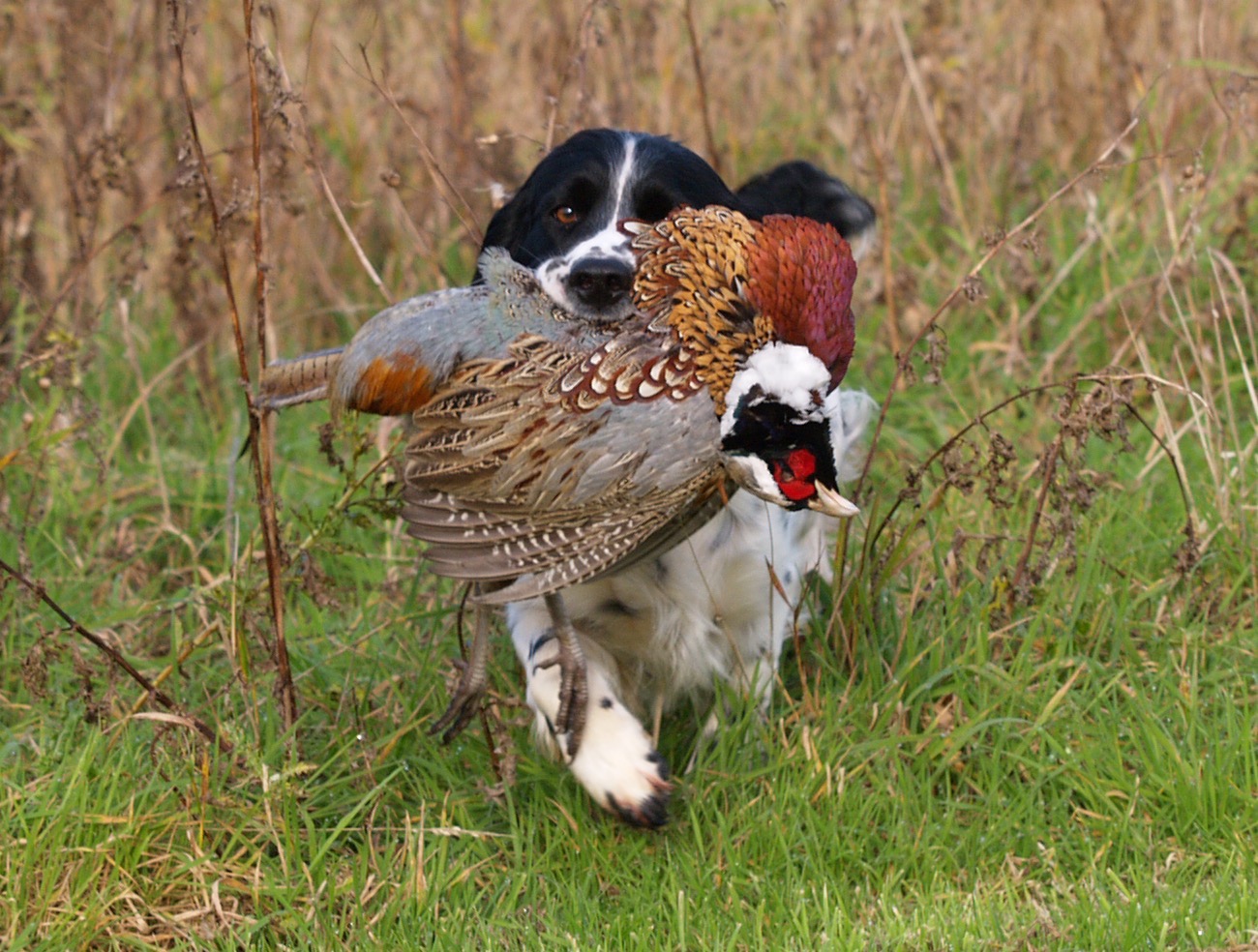How to keep an old springer going strong
David Tomlinson’s English springer is still going strong at the age of 16, something he puts down to good genes, a healthy diet — and luck

Rowan, pictured aged one, finds rough shooting more to her liking than picking-up
There was uncorking of champagne in the Tomlinson household last month, celebrating spaniel Rowan’s 16th birthday. English springers are generally regarded as enjoying, on average, one of the longest lifespans of any of our sporting dogs, with a life expectancy from 12 to 14 years. Not many make it to 15 and even fewer reach 16, so the occasion was well worthy of a bottle of my finest fizz.
Of course, long life in a dog depends on a number of factors. Luck is perhaps the most important element, but couple that with good genes free from hereditary diseases, plenty of exercise and a healthy diet, and you have the recipe for a long life. (Thinking about a dog’s diet? Read our advice on what to feed a gundog on shooting days, or whether it’s better to feed them before or after exercise).
Rowan was one of 10 puppies born to my working bitch, Fleur. She was sired by a stud dog from a leading show kennel, albeit one where the dogs were worked, too.
She was as outbred as is possible with a pure springer spaniel, with no shared ancestors in her pedigree for very many generations. As any geneticist will tell you, outbreeding is one of the best ways to ensure healthy stock. Some years ago the director of a pet insurance company told me that his most profitable clients were those with mongrel or cross-bred dogs, as the chances of them making a claim were much lower than for those with pedigree animals.
Healthwise, Rowan has led something of a charmed life. When she was four, we found a lump on her underside, so it was removed by the vet. She was spayed at the same time. The latter was really a precautionary measure, as her maternal great-grandmother had died at 12 from cancer caused by mammary tumours.
I’m not generally in favour of neutering a dog unless there’s a good reason. Tests showed that the lump was benign, but it seemed a sensible precaution to have it removed.
She had no further illnesses nor need for veterinary attention until she got to 12, when inflamed gums led to some expensive oral surgery. I blame myself for this, as good husbandry includes cleaning a dog’s teeth as regularly as possible, something we hadn’t done.
If she was a human, she would now be wearing a hearing aid and glasses, but she can still hear the whistle (just) and, though her eyesight is poor, she doesn’t bump into anything. Her sense of smell seems to be undiminished. She’s not on any medication, though I do add Joint Aid For Dogs to her dinner every night.
On the subject of dinner, she has been fed a raw-meat diet throughout her life, served with boiled rice and green vegetables, and usually a handful of Salters dried dog food. It contains extra virgin olive oil and it’s the only dried food that I’ve sampled myself and found to be surprisingly edible. All the puppies in Rowan’s litter were weaned on raw chicken wings and she has had a wing for her breakfast ever since. That’s more than 5,000 wings and counting.
I can’t pretend that she was my best-ever shooting dog — she wasn’t. Unlike her mother, picking-up was not something she was good at — driven days were far too exciting — and rough shooting was much more to her liking. She never really retired from shooting and even enjoyed a couple of excursions last season.
She keeps fit with a 40-minute walk every morning and a more gentle excursion later in the day. She can still canter when she wants to, but she no longer lies down with her back legs splayed out behind. I was always led to believe that this position is a sign of good hips, which it may well be.

English springer Rowan, pictured two days before her 16th birthday, still appears to enjoy her walks
Longevity
Spaniels also seem to age better, visually, than many other breeds. Remarkably, she hasn’t got a single grey hair, not even in her ears. She has become thin and bony, but that’s probably helped her live as long as she has, as overweight dogs suffer much more stress to their joints and even their heart.
According to my research, the record age for a springer is 19 years and six months. Intriguingly, wolves in captivity frequently live into their late teens and some even reach 20. The wolf is the domestic dog’s ancestor, so it’s worth considering why our dogs don’t live longer.
Selective breeding for looks rather then health seems to be a factor, while I doubt if many breeders have ever included longevity as one of their priorities. Rowan’s dam, Fleur, lived to 15 years and two months, so perhaps she has longevity in her genes, but her grandmother died shortly before her ninth birthday.
Like her master, she’s not as agile as she once was, but the fact that she still gives every appearance of enjoying her walks is important. Between walks, much of her day is now spent snoozing, waiting for the next meal. She generally becomes active about an hour before supper time as, like many old dogs, she is obsessed with food.
It’s when she loses interest in eating that we will know the end is nigh. Dogs generally have a way of making you aware when they’ve had enough and there’s no point in keeping a dog alive when its zest for life has gone.








